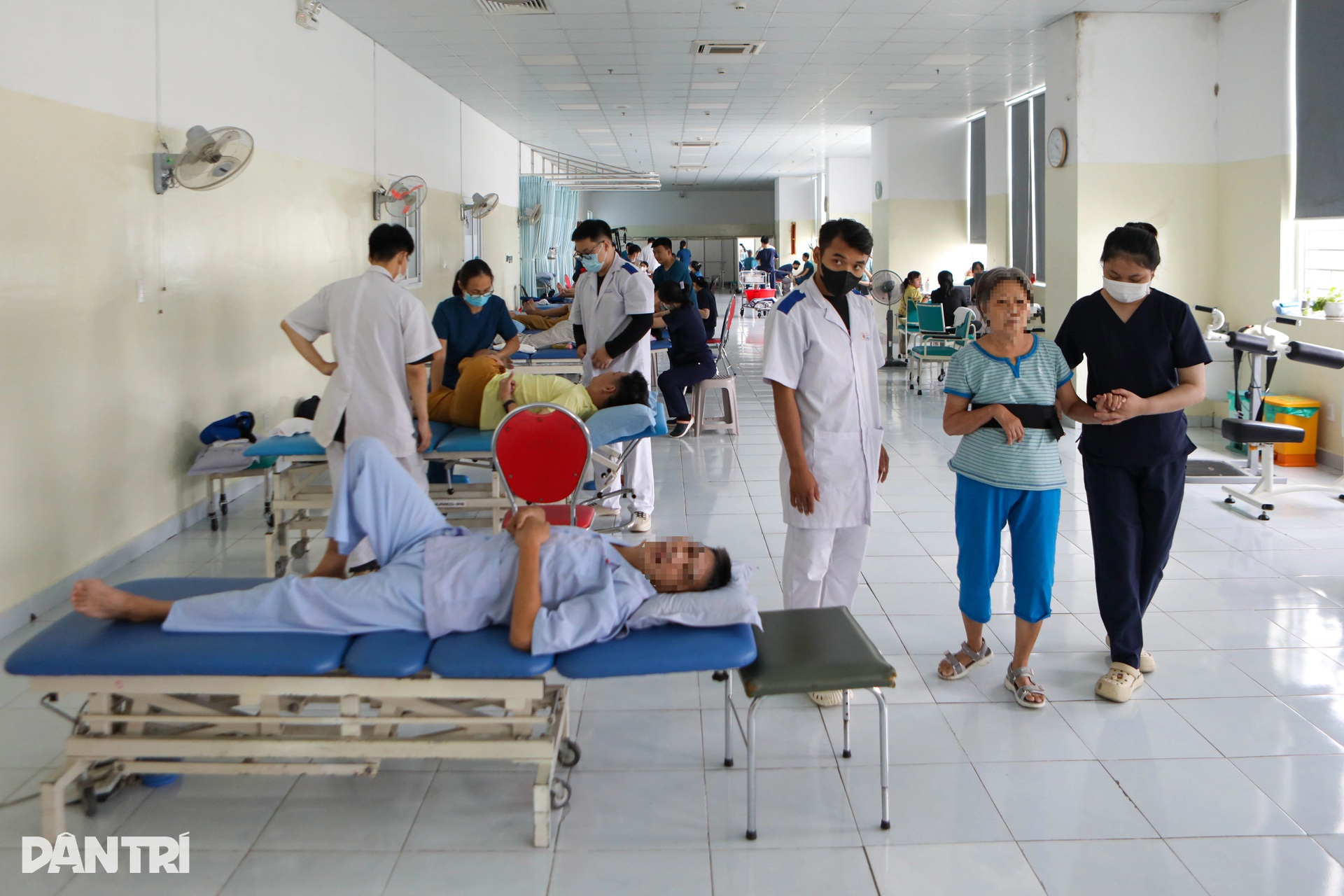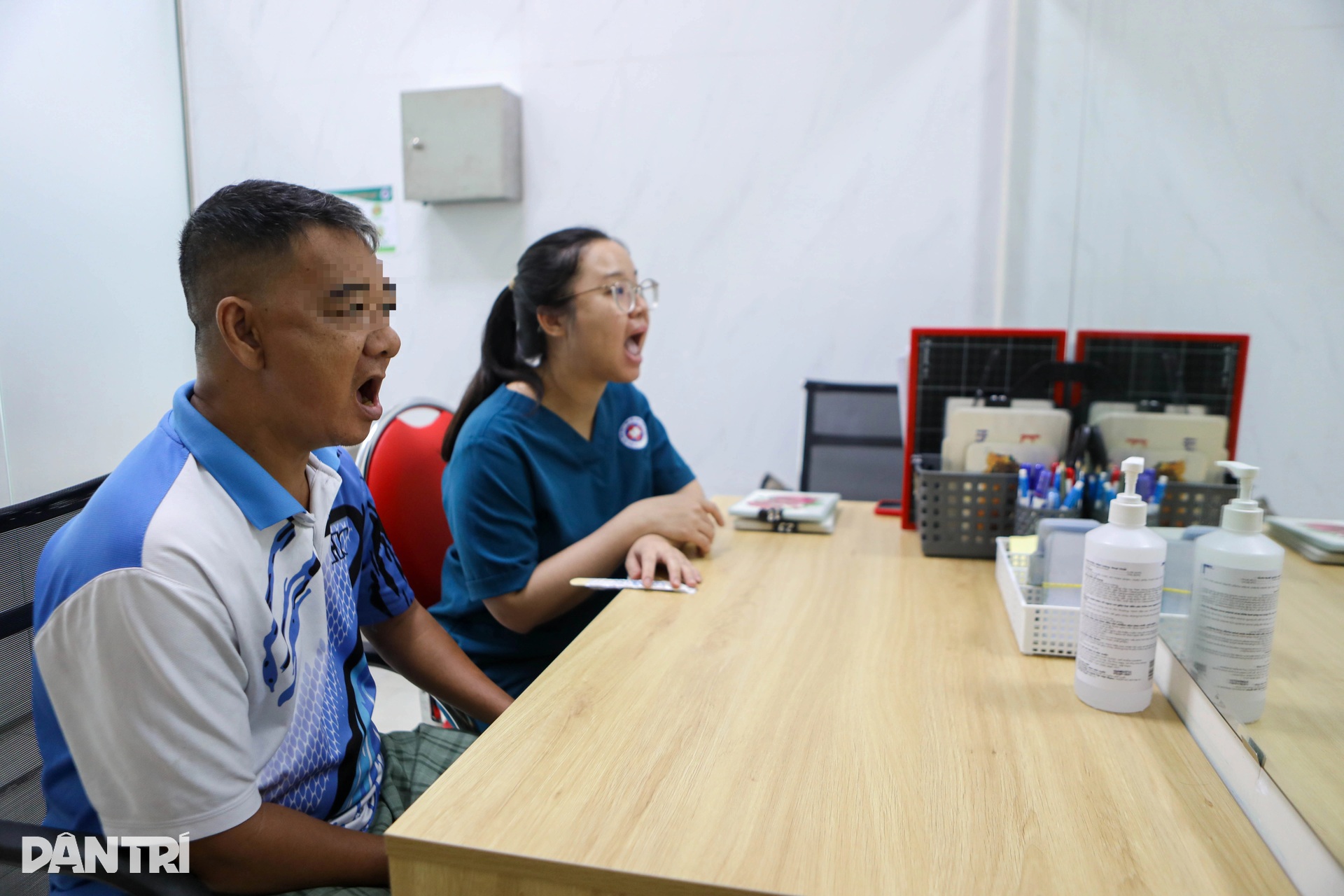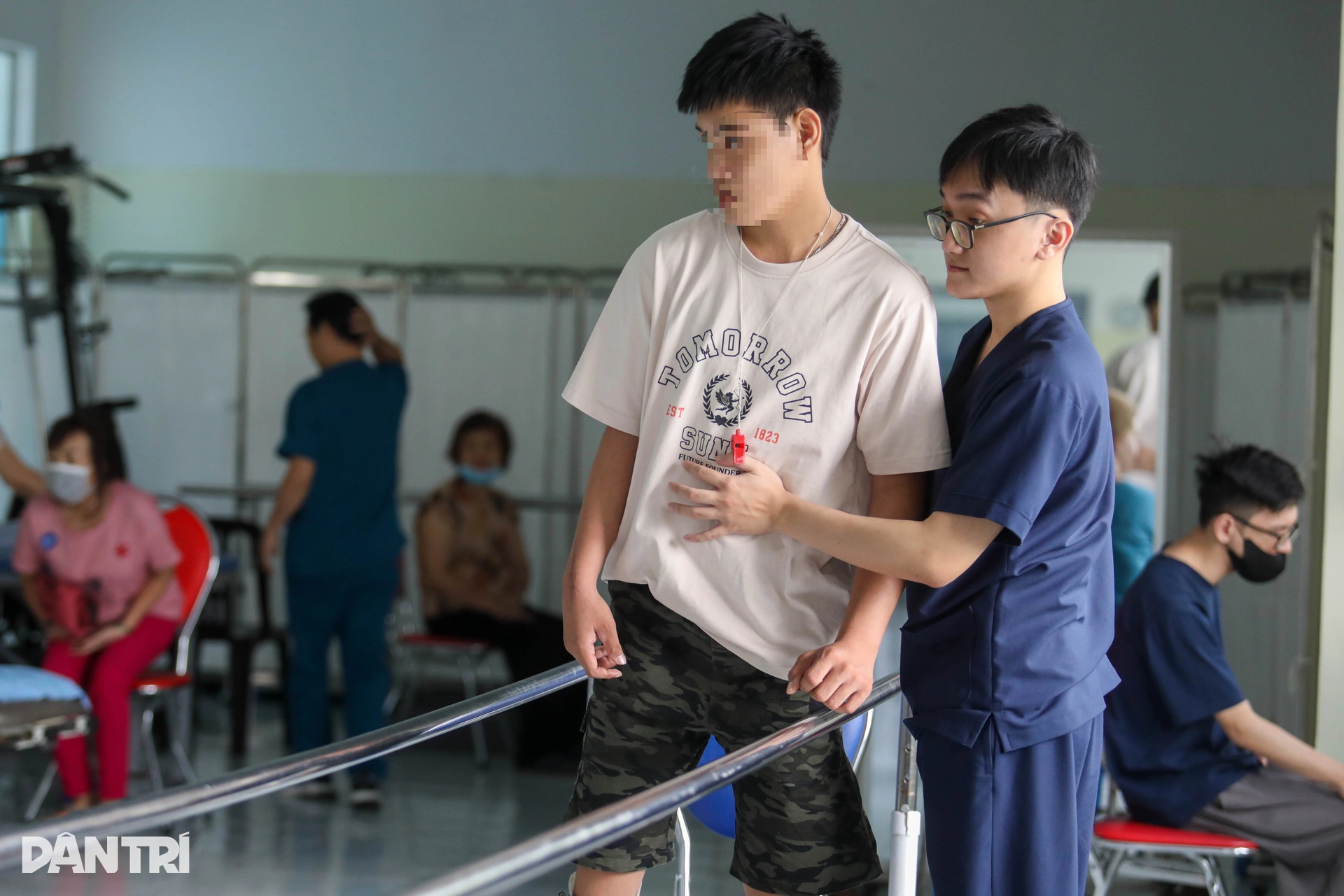
Early in the morning, the physical therapy room of the Rehabilitation Department, Hospital 1A was packed with elderly patients coming for treatment. Many had suffered strokes, lost their mobility and now have to persevere in learning to walk, stand and grasp things in their old age.

One morning, a week before being admitted to the hospital, Mr. Pham Trong Tan (58 years old, Khanh Hoa ) suddenly felt dizzy, had hemiplegia, and could not move his limbs as soon as he woke up. At the local hospital, doctors discovered that he had a blood clot in the cerebral aorta, diagnosed him with a stroke, and quickly transferred him to Ho Chi Minh City for treatment.
After the intervention, Mr. Tan regained consciousness, but the stroke left him paralyzed. At nearly 60 years old, the man began to learn to hold the smallest things again, slowly regaining his previous life.

An elderly patient walks slowly after a stroke under the guidance of technicians and nurses.
According to Dr. Trinh Minh Tu, Deputy Head of the Department of Rehabilitation, in the elderly, motor sequelae after a stroke can make many people unable to perform basic activities on their own. Rehabilitation can help patients achieve maximum independence, reducing the burden of care for their families.

After simple exercises, depending on the doctor's instructions, the patient needs to practice muscle strength with support equipment. Thanks to advanced equipment, the patient's recovery process can be faster, but strong will and dedicated care from the family are the greatest strength, helping the patient overcome difficulties to regain normal life before.

In a corner of the room, Mr. Andy Tran (60 years old, Vietnamese American) and his wife are waiting for their turn to do physical therapy. A month ago, the man suddenly suffered a stroke while working. Luckily, he was rushed to the emergency room early and received timely intervention, but he almost completely lost the ability to move and speak.
"15 days after surgery, my husband's health was assessed as stable and he could fly. I immediately decided to send my 5 children to relatives in the US to take care of, while he and I flew back to Vietnam for rehabilitation.
After researching many sources, I learned that Vietnamese healthcare is highly rated and has much lower costs. In addition, I will also receive support from my family to take care of my husband instead of being alone in the US," Ms. Tram (43 years old) shared with Dan Tri about the reason for returning home for medical treatment.


Three times a week, Mr. Andy regularly practices rehabilitation with a walking robot. In addition to practicing walking with the robot, every day, Mr. Andy also receives acupuncture, acupressure, and electric shock as prescribed by his doctor.
At first, the man could not move and needed four people to help him sit in a wheelchair. Now, after five weeks, he can stand and start walking with the help of machines and technicians.

Stroke rehabilitation patients, especially the elderly, often have to stay in the gym for a long time to regain normal walking ability.
Rehabilitation programs need to be individualized based on the extent of injury, age, underlying disease, and comorbidities. The entire team of doctors, technicians, nurses, and family must work closely together to help the patient move from a bedridden state to standing up and achieving maximum independence.

After a stroke that occurred at the end of 2023, Mr. Phan Hai (53 years old, Ho Chi Minh City) was paralyzed on the right side of his body and completely lost the ability to speak, although he understood everything that people around him communicated. Since then, he has only communicated with people around him through nods or mumbles. Speaking and basic expression have also become a great effort.

After more than a year of first-year motor rehabilitation, Mr. Hai switched to language rehabilitation at Hospital 1A. Looking at himself in the large mirror, the man in his 50s struggled to open his mouth and began to learn to pronounce the simplest words. Over the past two years, Mr. Hai has come a long way in his recovery journey after his stroke, and that journey is still very long for him to return to his previous life.

After a stroke, rehabilitation is key to reducing complications and improving the patient's quality of life. This should be started as soon as possible, once the patient's condition has stabilized.


Not only does the hospital provide post-stroke rehabilitation for elderly patients, it also has many cases of very young age. According to Dr. Tu, the number of young stroke patients is not large but has been increasing recently.

Having crossed the line between life and death after a stroke, the patient faces a challenging journey to regain normal life. Simple tasks such as talking, eating, dressing or walking become a burning desire.
Thanks to their strong will, along with modern equipment and advanced techniques, their road to recovery becomes less arduous.
Source: https://dantri.com.vn/suc-khoe/tap-di-tap-noi-o-tuoi-xe-chieu-20250921235141494.htm







![[Photo] National Assembly Chairman Tran Thanh Man attends the inauguration ceremony of the Memorial Site of National Assembly Standing Committee Chairman Bui Bang Doan](https://vphoto.vietnam.vn/thumb/1200x675/vietnam/resource/IMAGE/2025/9/28/6feba23492d14b03b05445dd9f1dba88)



























































































Comment (0)